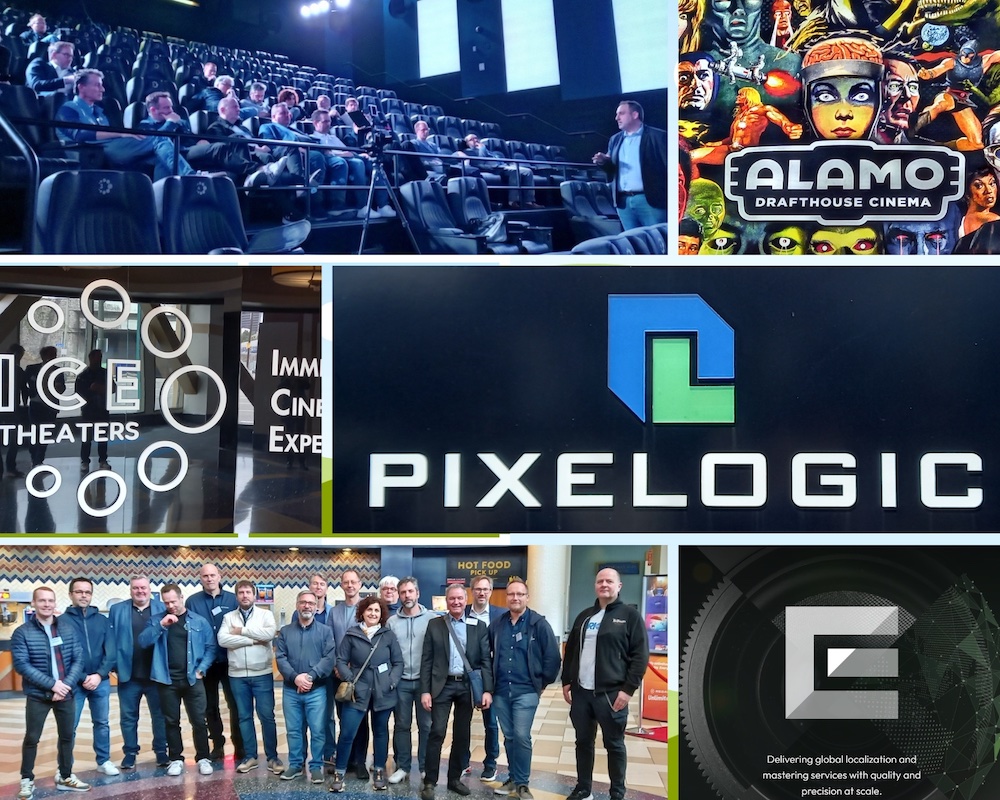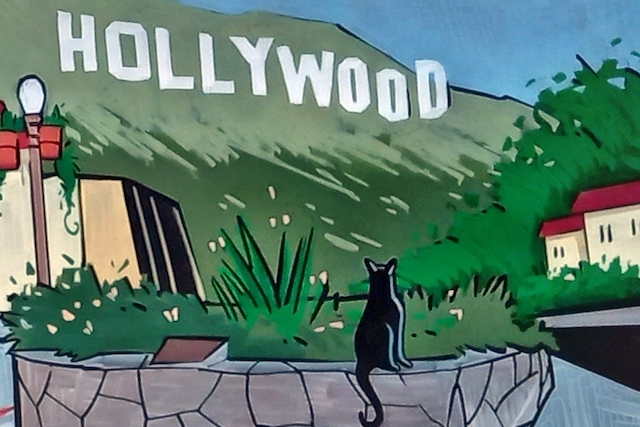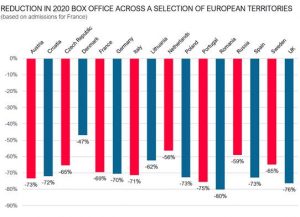As in previous years, the EDCF LA Tour 2024 (April 4-5) was once again a two-day experience packed with interesting encounters and discussions. On both days the main focus was on keeping up with the latest industry trends. One of the big topics this year is the impact of the premium experience on the cinema box office. 20 people from all over Europe took part and used the opportunity to take a look behind the scenes of Hollywood studios, iconic cinemas and new technology companies.
It began with a demonstration of the first US implementation of the emerging GDC/DTS direct view screen with. The 14m Unilumin LED wall impressed with new technology capable of adapting film style reproduction, 4K resolution, high contrast capability and amazing 3D presentations based on the dynamic lighting system DIVE. It enhances the pre-show experience with additional backlighting of speakers and extra wall lights controlled by the content. Reflective audio systems were used to optimise sound quality using DTS surround.

At the meetings with Warner Bros. and Universal Studio, the group had the opportunity to discuss trends in the industry and exchange perspectives. In general, optimism has returned. Barbie, last year’s most successful film, supports this optimism and suggests a further increase in cinema attendance. Technological aspects were also discussed. Audio and cinema sound are still not optimal in many cinemas and a more consistent implementation of light and sound in cinemas would be desirable. Closer cooperation with cinema operators seems necessary. The particular challenge of good audio quality with direct-view screens was also pointed out. However, new technologies and formats are seen as an opportunity to improve the cinema experience. These include HDR, HFR and the use of object-based audio e.g. improved speech intelligibility. Home cinema is increasingly perceived as competition and 3D films tend to be produced less frequently. The increase in proprietary standards is also concerning especially from the post-production perspective.
We looked at the Historical aspects of Cinema with the guidance of the Academy of Motion Pictures Arts and Science. Several museum staff members from three departments of the Museum, the literary archive, the photo archive and the archive for prints and art presented selected artefacts from over 100 years of Cinema history and film production. Many Letters, prints, personal objects, photos, sketches and scripts by famous artists, authors and directors can be seen in the museum which is worth visiting once again.
The first tour day ended with presentations of the premium format CINITY which is getting increasing support from studios. Cinity is a new Film format owned by China Film Group with over 120 Cinity Screens already in operation in China mainland. It is getting increased attention in the US and outside China. The impressive demonstration of Cinity demo material showed the possibilities of the format which specifies HFR with up to 120fps,3D in 4K, HDR and immersive audio. Versioning for the US and Europe is supported by Deluxe.

The second day of the Tour started by visiting the Alamo Drafthouse theatre. After five years in operation, we had the chance to discuss the alternative multiplex concept. They have taken advantage of their flexible network technology to create a cinema-goer fan base for presentations, special films and commercials without PLF screens. Moderate box office pricing, alternative programming, drinks and food inside the theatre during the film screenings and good picture and sound quality are ensuring booking rates of 75% occupancy on average.
The next stop was the Ice Regal theatre where Harkness demonstrated their new screen technology. Equipped with the newest Laser projectors, the new screen surface with low frequency “vibrating screen technology” significantly improves speckle by app 30%, increases contrast, spreads the hotspot and improves 3D performance.
At Pixelogic intensive in-depth discussion followed on HDR, HFR, motion grading and other production elements that contribute to optimizing the premium experience. The focal points of the services are support for the creative processes as well as AI-based localization of graphics, text and animations as well as distribution services worldwide with several locations on all continents. Localization is becoming more important as national legal regulations and requirements demand for more complex post-production with increased usage of AI technology. Examples like adding different language subtitles, removing unwanted objects like cigarettes, change of dressing to address cultural differences. All current formats are supported incl. 4K. Impressive presentations were demonstrated in Dolby Vision and CINITY rooms. Detailed discussions were held on the progress made with HFR. Pixelogic uses Pixel Works’ True Cut technology, which makes it possible to maintain a cinematic look during motion grading while eliminating imperfections and artefacts based on the frame rate to be corrected.
Eikon impressively demonstrated how they have grown serving the post-production requirements for localization in both streaming and theatrical. New showrooms are equipped with the latest technology to demonstrate their work on VFX and complex mastering to support all film formats. The business for Cinema post-production work has recovered after the pandemic to the same level as before. Post-production for Cinema compared to TV and streaming is now by app. 50%.
The EDCF LA Tour 2024 ended with a party taking in a Los Angeles ocean view as well as the hills with international colleagues.
Thanks to Thomas MacCalla and David Hancock for all the support and Julian Pinn for the moderation. We all are looking forward to the EDCF LA Tour next year.
Juergen Burghardt – General Secretary – European Digital Cinema Forum



